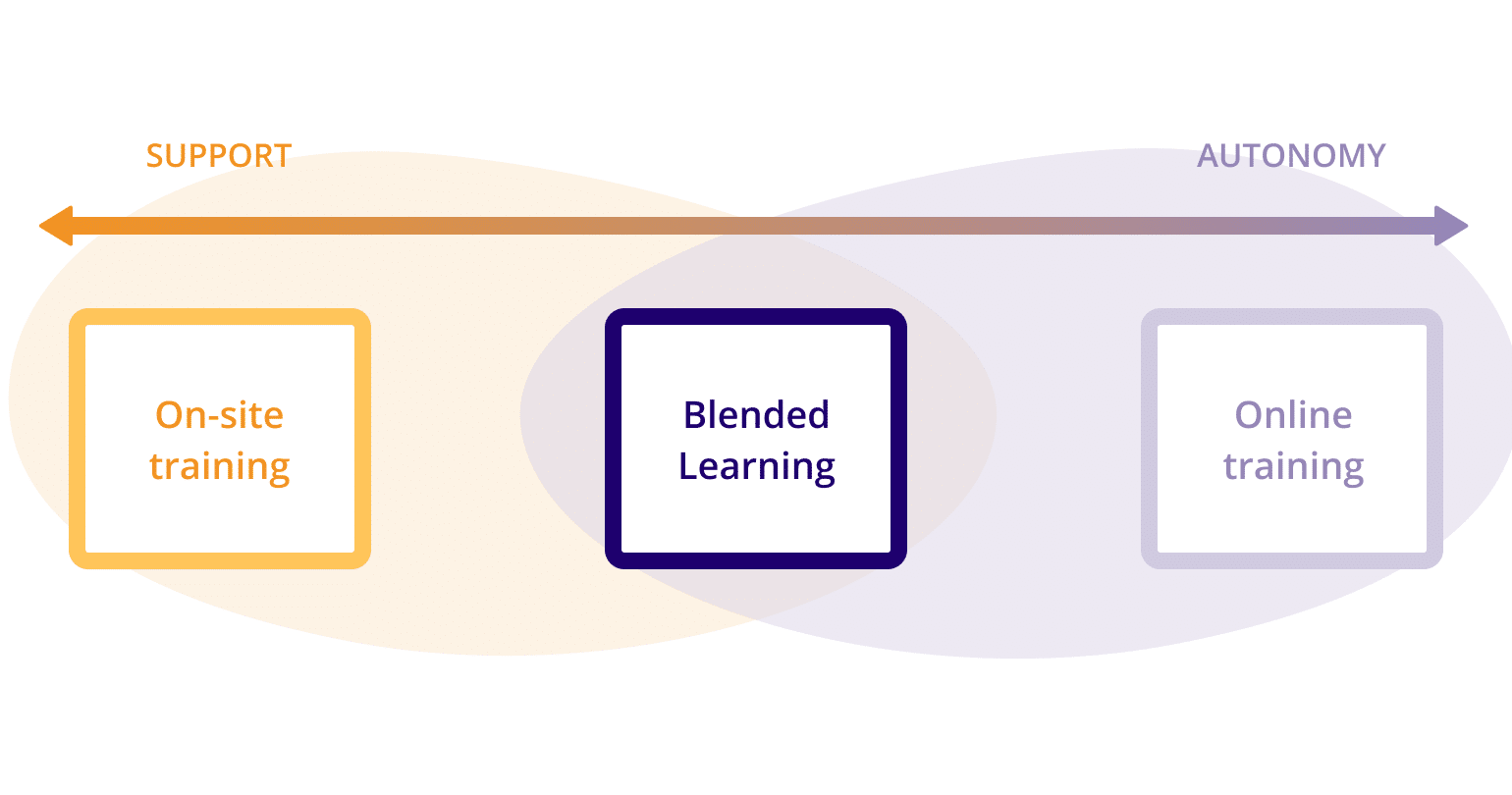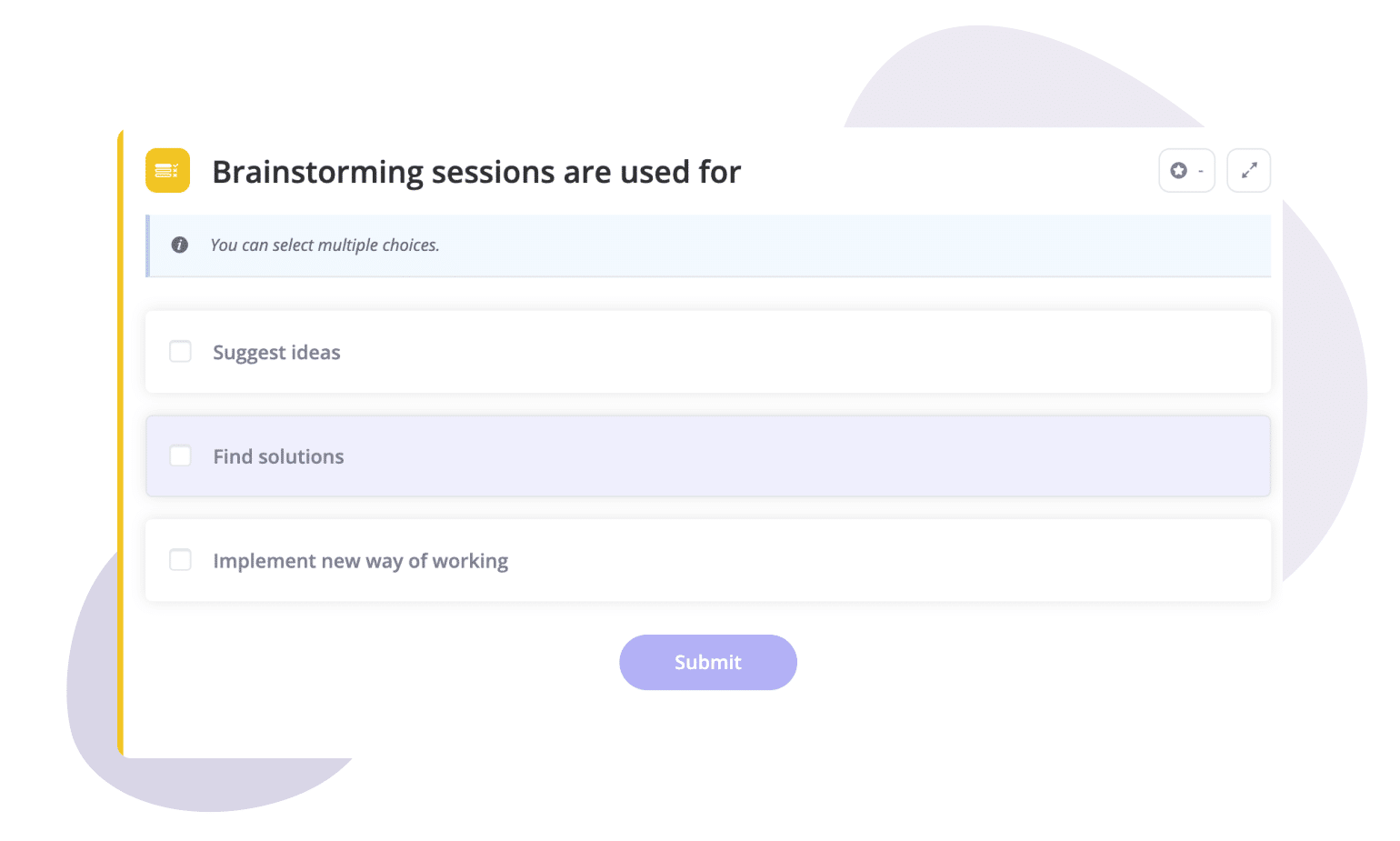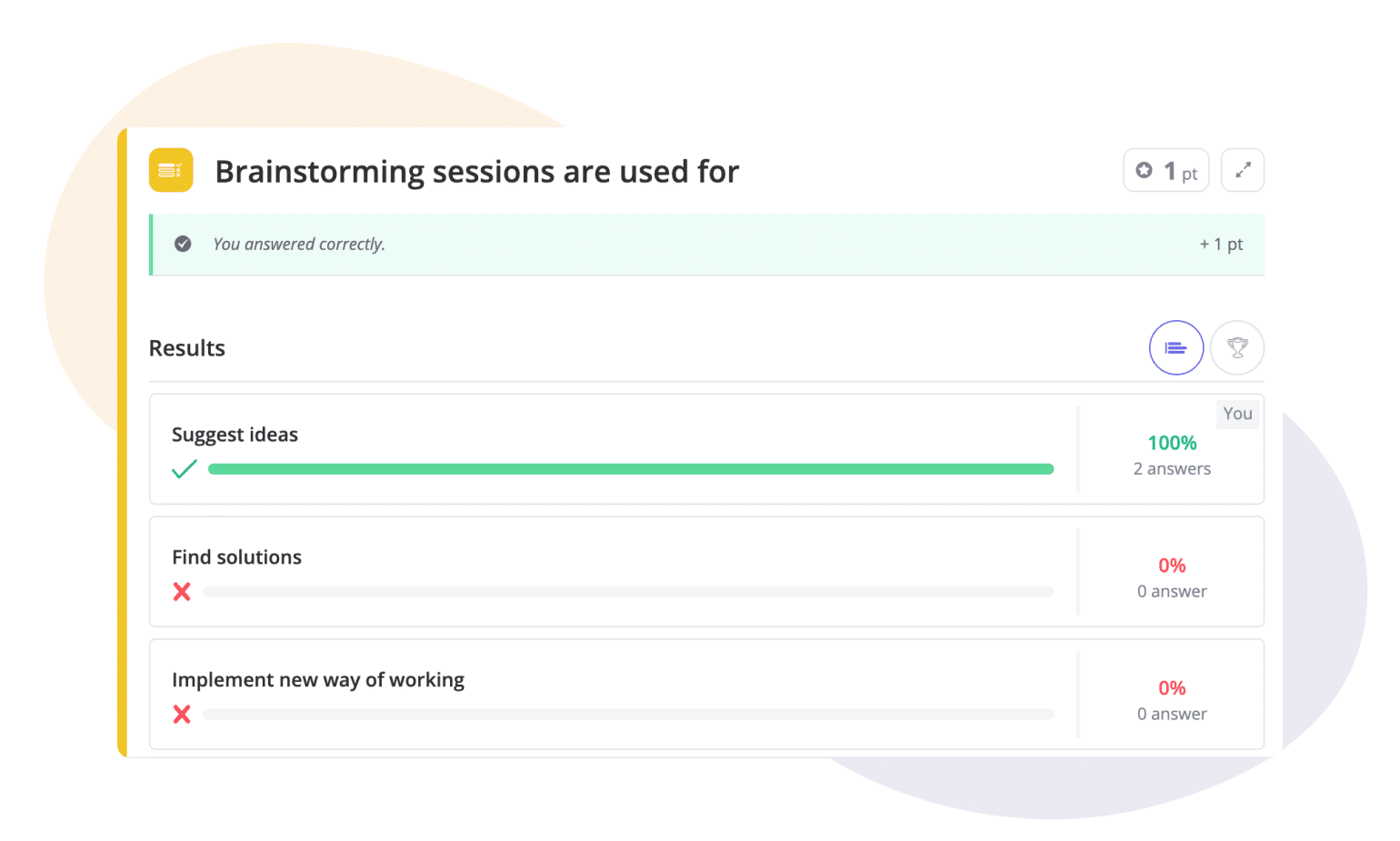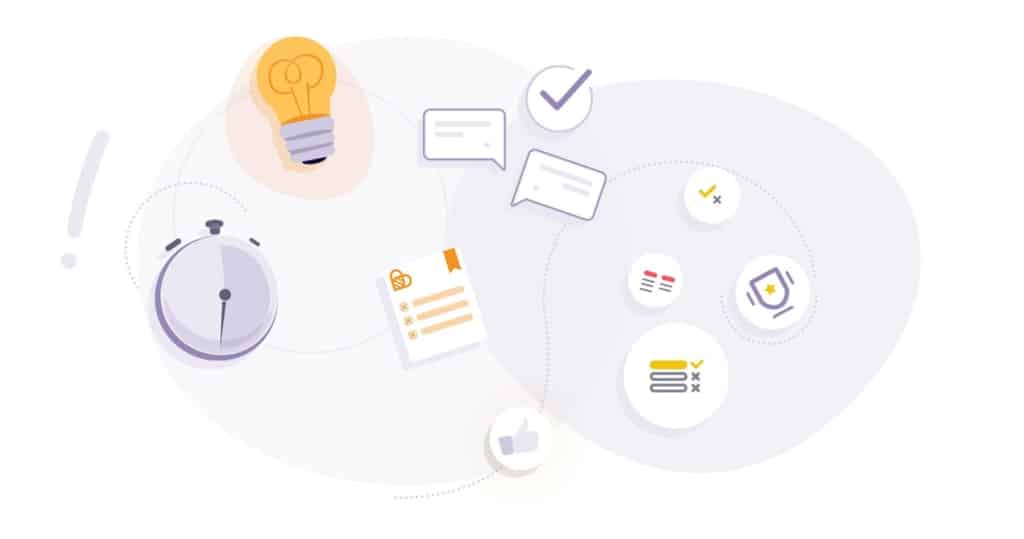The covid-19 pandemic has contributed to a massive acceleration in the online training market. More generally, HR managers, trainers and learners all have an interest in deploying and making greater use of new technologies and methods for managing the skill development process. We have moved beyond the stage of experimentation with teaching methods and technical tools, and can now point to a proven method that’s increasingly widespread in the world of professional and traditional training.
What is blended learning?
E-learning is “the use of new multimedia technologies and the Internet to improve the quality of learning by facilitating access to resources and services as well as remote exchange and collaboration” (source: European Union). However, this definition doesn’t mention that e-learning is used to complement traditional methods, but does not replace them.
Each e-learning module can incorporate some form of autonomy into the learning process, but not necessarily distance learning or autonomous learning (which are only individual components of e-learning). The defining principle of blended learning is an approach that alternates independent online learning with group-based work.
In other words, blended learning is a type of training that incorporates not only digital tools and independent learning, but also phases of in-person learning led by a real-life professional trainer.

The keys to effective blended learning
Organise and anticipate
You can’t plan for everything—that’s just a fact of life. But you can create a simple system that will allow you to respond to the most common reactions:
- Not all learners are comfortable with digital tools. So it’s important to provide intuitive tools that make it easy for everyone to understand where and how to access learning content.
- Some learners will want to go faster, while others may want to learn more about a given topic. So, additional content should be accessible and clearly identified as such.
Digital training should be all about people
Whether in virtual classes or in-person sessions, remember that your training sessions need to stay focused on the people taking part in them.
While the HR professions will continue to evolve, human beings are always at the centre of all forms of training. Informal discussions and interactions, connections, and helpful cooperation between learners are all integral parts of the training process. Doing away with trainers would mean losing an entire critical aspect of learning: sharing and human contact, which even the best online platform could never hope to replace.
Trainers are gradually turning away from top-down instruction and adopting the role of guides to help learners put new knowledge to use. Nothing beats real human connections when it comes to keeping everyone motivated and learning under optimal conditions. To learn more, check out our article about the keys to teaching a successful training course.
Offer interactive and innovative activities
Whether it’s in-person training or online learning, the specific activities you choose should serve as an anchor for newly learned concepts. This prevents overwhelming learners with details before they have a chance to understand how they fit together in a larger context. For example, you may opt for an MCQ. With Beekast, add an MCQ to your blended learning course quickly and at no charge to evaluate your learners’ level of understanding.

Consider adding an extra level of challenge by gamifying your training sessions.
Offer innovative, user-friendly formats
E-learning is often associated with video, but that’s only the tip of the iceberg. The great thing about e-learning is that you can add sources of content not only within the module itself, but also externally. You can refer learners to a website or online library, or recommend that they read an article written by a leading figure in your field of study.
If your content is presented in the wrong form (videos that are too long, an application that’s too hard to use or poorly implemented), users may turn to different sources of information, causing you to lose control of your training course. So be sure to choose your tools and content sources carefully with the user in mind. With Beekast, for example, you can replace your bullet points and PowerPoints with interactive presentations!
Take advantage of available data
One of the greatest advantages of digital formats is that they give you lots of insight into the results and the quality of your training modules and courses — allowing you to quickly identify learners who are struggling and redirect them to the most appropriate training modules. Depending on your organisation’s level of digitisation, this process can even be automated! But most importantly, this type of data lets you identify evaluations that are too easy or too hard in a simpler way. For example, you can adjust your training content or your evaluations based on the success or abandonment rates.

Conclusion
E-learning itself is simple. The difficulty lies in choosing the right teaching methods and formats. Digital formats must be compatible with new modes of learning (distance learning, social learning, etc.) and their restrictions. Learners are always at the heart of the design of any training course, and develop new requirements and expectations as their digital habits evolve: mobile learning, micro-learning, etc.
One of the primary advantages of blended learning is the time savings that come with remote training systems when they are simple and intuitive to set up.
These new uses require designers and trainers to adapt their training modules to be compatible with these new formats. Whether it’s the format or the specific type of content, form is as important as substance when it comes to e-learning.


